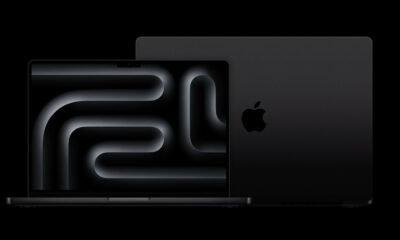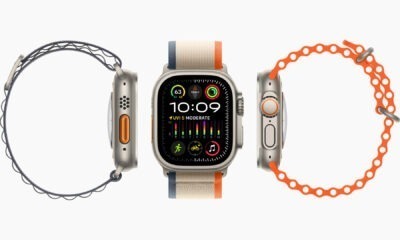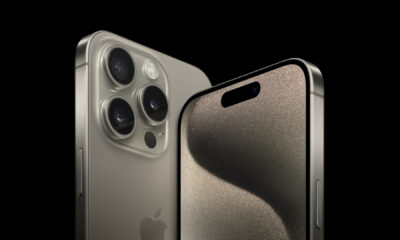Home
Apple official unveils iPhone 6 and 6 Plus
Apple is back with the latest iteration of its wildly successful smartphone, the iPhone. Today, the company introduced two new models: The iPhone 6 and iPhone 6 Plus.
Both models sport curved edges and rounded corners, creating a more unified and welcoming design. Apple says the back has been constructed from anodized aluminium and features a “stainless steel Apple” emblem.
The iPhone 6 is the smaller of the two, with a 4.7-inch display and 1334 x 750 pixel resolution. Meanwhile, the iPhone 6 Plus sports a larger 5.5-inch panel and a more pixel-dense 1920 x 1080 resolution. Both are considered “Retina HD” displays, which Apple describes as a “new generation” of screens for its smartphones. For context, the iPhone 6 Plus features 185 percent more pixels than the current iPhone 5s.
Both devices are luxuriously thin too. The iPhone 6 comes in at 6.9mm, while the larger iPhone 6 Plus manages a still attractive 7.1mm. Both are skinnier than the already sleek iPhone 5s, which measured 7.6mm on the side.
With a larger display comes changes to the overall software experience. Showing the iPhone 6 and 6 Plus side-by-side, Apple was able to show how various apps would look different on the two devices. Turning either sideways also reveals an altered UI, similar to Apple’s iPad tablets. The home screen will also change automatically in this new landscape mode, ensuring the app icons are always facing the right way up.
Both the iPhone 6 and iPhone 6 Plus feature a new gesture called “reachability,” which pulls the entire screen down into the bottom half. The upper section is left entirely blank and it’s designed to help you select buttons and links that would normally be difficult to reach.
On the hardware side, the power button has been repositioned on the side now. This is identical to the large majority of Android smartphones that sport similarly large displays. In short, having a power button right at the top can be difficult to grasp in one-handed use.
Under the hood is a new A8 processor. It’s a “second generation” 64-bit chip that features 2 billion transistors and up to 25 percent faster CPU performance. Graphics performance is also 50 percent faster; both of these should result in a faster, more powerful iPhone with less slowdown, stutters and lag.
Apple is also improving the battery peformance of its new iPhone models. In a chart, Apple promised equal or better performance for both the iPhone 6 and iPhone 6 Plus in all areas, including audio, video, Wi-Fi and 3G browsing. Standby time is probably the best metric, however; Apple says the iPhone 5s managed 10 days on standby, and this will be roughly the same on the iPhone 6. On the iPhone 6 Plus, however, this rises to 16 days – a huge improvement that’s no doubt possible because of the larger chassis.
The lay of the land
The smartphone landscape is changing and while Apple still sells a dizzying number of smartphones, the pressure to innovate and offer something fresh has never been greater. Android handsets are simply getting better: The metal design of the HTC One (M8) is gorgeous, the cameras in Sony’s Xperia handsets are proficient and Motorola’s Moto smartphones continue to offer lively customization options. Android itself is improving and what we’ve seen fromAndroid L so far highlights a renewed emphasis on design.
All of this fails to mention the steady progress Microsoft is making with Windows Phone 8.1 and the latest range of Lumia smartphones.
As such, Apple needs to prove that it’s still the frontrunner in the smartphone industry. The iPhone arguably defined the modern smartphone, but to ensure its continued success, Apple needs new ways to stay ahead of the pack.
Make no mistake, the latest iPhones will sell like hotcakes. But technology enthusiasts don’t just want a smartphone that sells well. They want a smartphone that is bold, beautiful and simply better than the rest.
Has Apple done enough? Let us know in the comments below.



























Recent Comments